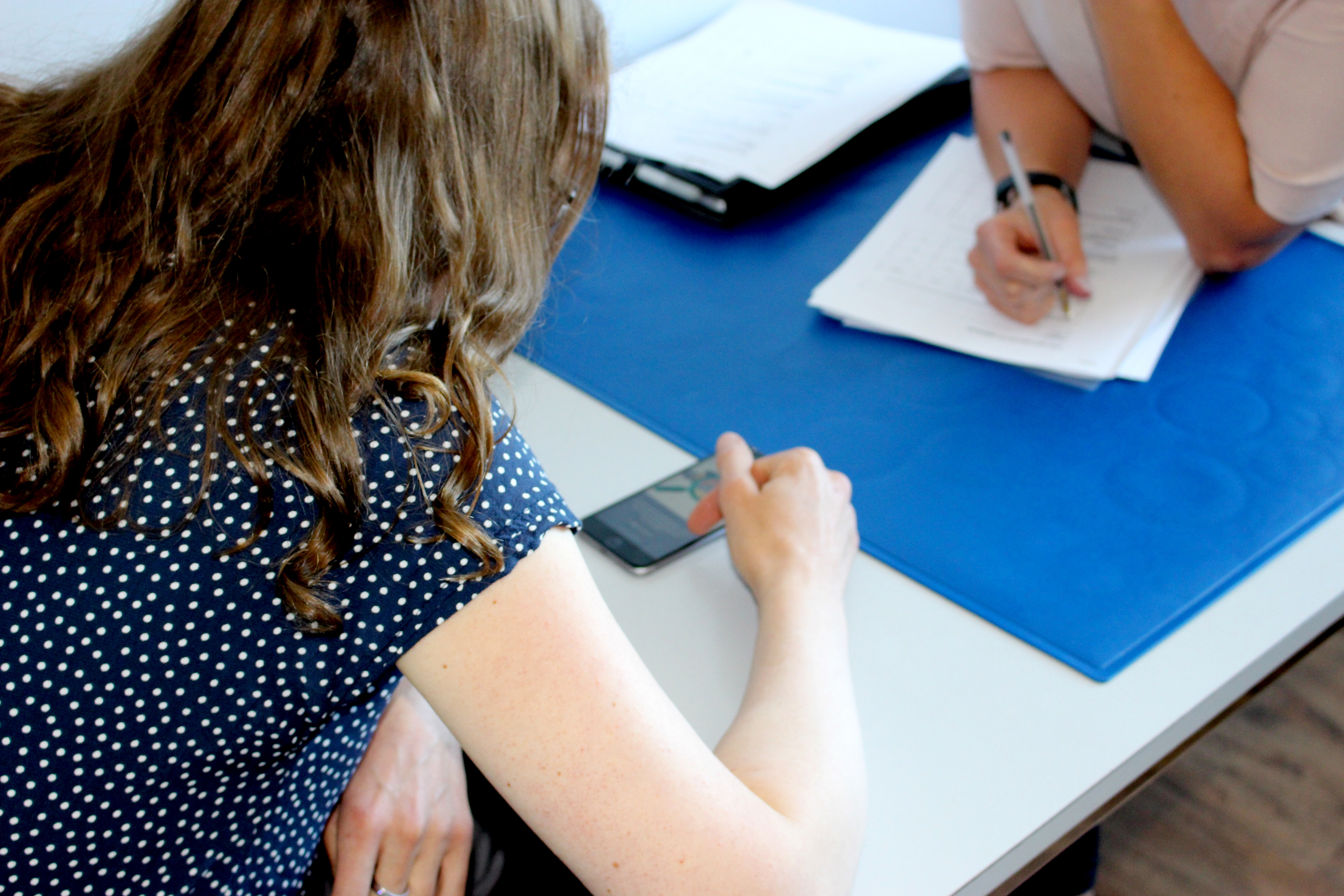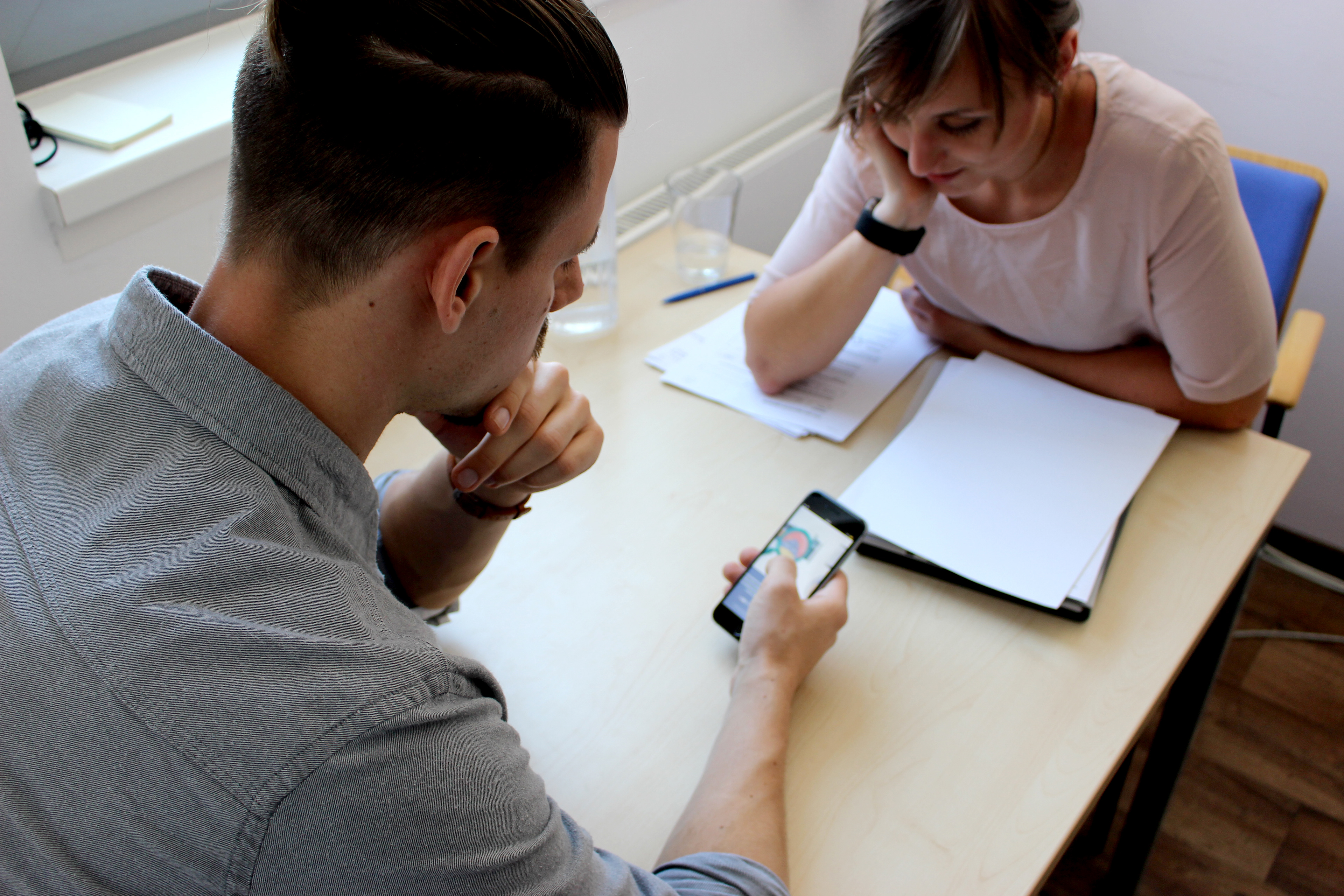Introduction
Patients, who suffer from OCD are driven by unreasonable thoughts and unwarranted fears, referred to as “obsessions” that make them feel anxious and distressed.
The most effective treatment is Cognitive Behavioral Therapy involving Exposure Response Prevention. However a significant number of patients drop out the therapy early and the most of them don't perform the Exposure exercises in between the therapy sessions because they don't have structural guidance of their progress.
About 25% of people who start the treatment drop out early. The therapy involves intentionally and regularly exposing oneself to anxiety-provoking situations.
The outcome
I developed an app as a mobile treatment tool that improves the life of people suffering of OCD and assist their therapy. Spirit is suitable for appropriate exercises to be applied for self-treatment at home or in certain situations under the auspices of an expert therapist.
We implemented gamification techniques to improve empowerment that provides the understanding of the benefits from therapy as a major force behind the motivation for healthy behavior and active support in the treatment of diseases.
“How can we empower OCD patients to do their exposure exercises on a regular basis?”
OCD patient describing his condition
"A Monster in My Mind"
"Obsessive-compulsive disorder has had a profound impact on my life, muffling my school grades, discontinuing my social life and even forcing me to drop out of university."
- Foyez
Gamification for Health Behaviour Change
The app emphasises patient’s compulsion as a little monster, which frightens the patient to follow his or her obsessive behavuior. If the patient successfully complete one level the monster transforms to a baby monster, which does not frightens the patient anymore and shrink to “normal“ worries
Real time reports of their EPR treatment progress by anxiety tracking of each exercises. The patient is able to describe their feelings and thoughts during the EPR exercises. The entries are collected in a diary and helps the patient to self- reflect.
Patients can fill in a personal long term goal, which they want to achieve. This will reminds them why they are doing the exercises. This goal will be visible in the profil for self- motivating.
Create your Fear Ledder & EXPOSURE Exercise
Avoidance Hierarchy is a CBT worksheet introducing a fear hierarchy or an avoidance hierarchy.
Using this worksheet the patient can be guided into developing a hierarchy of feared situations ranging from most feared at the top to least-feared at the bottom.
The patient is encouraged to give anticipated fear, anxiety, or distress ratings for each item – according to how distressing they feel it would be to encounter that situation .
FACE & OVErcome EACH MONSTER IN YOUR MIND
OCD AS FICTIONAL ENEMIES
The app provides useres the possibility to externalize their problematic obsessive thoughts and compulsive behaviours into a narrative element that can later be destroyed or controlled.
The element representing the problem should have a clear metaphor in order to help the user understand the characteristics and affordances of the problem.
CAGE METAPHOR
When the patients have executed an exposure exercise successfully, they still have to repeat the exercise to recover and to get rid of the feeling of anxiety.
Since the patients are still susceptible to relapses, the monster is bigger than the bars of the cage and can easily escape. During the repetition of the same exercise, the monster shrinks and it becomes less and less possible for the monster to escape from the cage.
When the patients do not feel uncomfortable any more by performing the exercise, the monster vanishes.
TELLING A metaphorical story OF OCD
If the patient sucessfully complete one level the monster transforms to a baby monster, which does not frightens the patient anymore and shrink to “normal“ worries.
It is a potential that the fears will always be there in the background, even if it is no longer affecting patients life.
The things the patient will have to do to treat it are really controls, and if he doesn‘t learn to effectively make use of them throughout his life, he will run the risk of relapse.
BEfore and After each EXERCISE rate your ANxiety
The fear tracking feature is used to support for scoring the exposure exerices.
The anxiety tracking support both individual reflection and data sharing with healthcare professionals.
By repeatedly confronting distressing stimuli patients learn experientially that they can tole- rate the distress that obsession-related stimuli provoke increases. In the process they learn that they do not “go crazy” or “fall apart” when experiencing states of high an- xiety. The emojis were selected by patient decrptions of their feeling during exposure exercises. The emojis repre- sent different anxiety levels.
ACCOMPLISHMENT
BADGES highlight actions that users complete. It is a way to show achievments different from scoring.
Using rewards makes players less likely to take risks, as they do not want to hurt their chances of being rewarded. This is especially relevant to rewards used in where we wish to encourage conducting the exercises even if the patient is failing.
RE-STATE THE LONG-TERM GOAL UPFRONT
AS OFTEN AS POSSIBLE
AS OFTEN AS POSSIBLE
DESK RESEARCH Clinical recovery and full remission, if they occur, do not occur rapidly. Thus, ongoing goals of treatment include decreasing symptom frequency and severity, improving the patient’s functioning, and helping the patient to im-prove his or her quality of life.
DESIGN DECISION: Re-state the long-term goal upfront as often as possible. Try to remind people why they should keep adding entries, and what the ultimate outcome of the app is: a more con-fident you. The patient can write his personal goal in the profile and this goal is always clearly visible on the top profile screen. The profile screen provides an overview of collected levels and badges. In addition we will use each opportunity to subtly remind people of the long term goal: a bit of encouraging text on an empty state of a screen, bars that illustrate that end of one level.
:
PROGRESS GRAPH
We are working on a progress graph, which is not subject to medical product guidelines. Due to this we are not allowed to interprete patients` process on the graph.
We do not want to create a medical product, because medical products would have higher standards and would require more complex legislation procedures.
TEST WITH THERAPISTS
The deployment study with a variety of therapists should helped me to understand if from their perspective the OCD
app is considered to complement psychotherapy in an appropriate way.
app is considered to complement psychotherapy in an appropriate way.
I tested the app prototype with 8 different therapists in the University Clinic of Hamburg. The app development was in close collaboration with one of the leading experts in that field Prof. Dr. Steffen Moritz.





CLinical Trial
Invited Speaker for the Games for Health Europe Conference
My talk was on the use of gamification and competitive elements to encourage adherence to treatment. Find more information here.
Year of design: 2018-2019
TEAM: Carmen Scherbaum (UX & UI Designer, project leader). Sander Boear (Programmer & Interaction Designer)
COllaboration: Prof. Dr. Steffen Moritz, Department of Psychiatry and Psychotherapy, University Medical Centre Hamburg- Germany
CONFERENCE SPEAKER: Games For Health 2018- Eindhoven, the Netherlands
Category: Digital design, E- health, Gamification